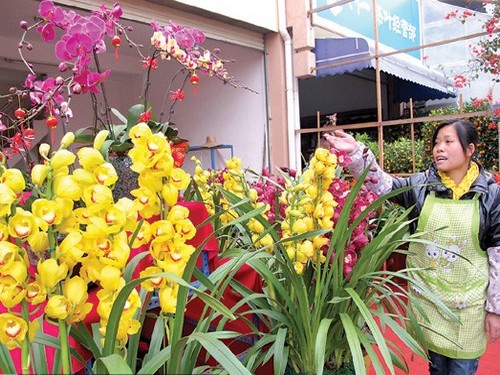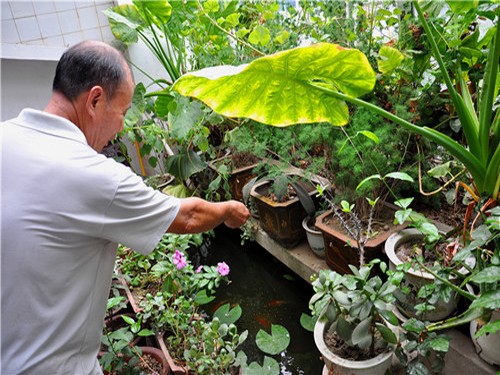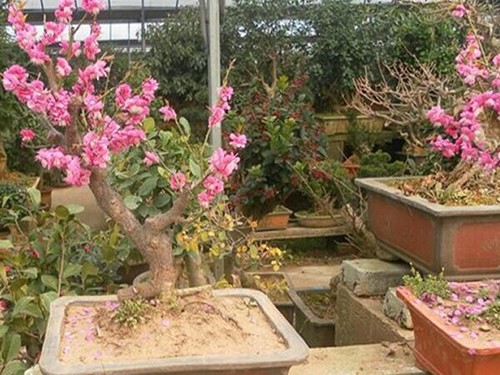Culture methods of potted Cymbidium
The place where the cymbidium is placed is very important, which directly affects the growth and development of the orchid. Cymbidium is usually placed in the open field in spring, summer and autumn (in summer in the shade of the open field) and indoors in winter. It is best to be open and moist outside. There should be plenty of light in the room, preferably facing south. In this way, it is beneficial to the growth of cymbidium. The orchid basin had better be put on the wooden frame or table, not on the ground. Next, the editor will talk about the culture methods of cymbidium for you:

[lighting guarantee]
Cymbidium likes light, except in the hot summer season, can accept direct light, high temperature season should be shaded by about 30%, in order to promote the formation of flowers, while preventing scorched leaves. Light is very important for the growth of Cymbidium. Cymbidium is the most light-loving orchid in the national orchid, which needs about 60% shade when the sun is strongest in summer, but not in other seasons.
[suitable temperature]
Cymbidium is native to low latitudes and high altitude. the suitable temperature for growth is from 10 ℃ to 25 ℃. It is suitable for overwintering and about 10 ℃ at night. Cymbidium is not more than 38 ℃ in summer, 5 ℃ below zero in winter, and the reproductive growth temperature is 10-20 ℃. Huilan is the most cold-tolerant and high-temperature-tolerant orchid in Guolan.
[humidity requirements]
The requirement for air humidity of Huilan is 60%, 75%, not less than 50% during winter dormancy, and 70%, 80% during growing period.
[watering and moisturizing]
Cymbidium has a high demand for moisture, and it should not be too dry during the growing period. in principle, it should be watered as soon as it is dry, and it must be watered thoroughly. It can be watered every three or four days in spring, autumn and winter, and the watering times should be gradually increased with the increase of temperature. It needs to be watered 2 to 3 times a day in hot summer, and foliar water is often sprayed to increase air humidity to avoid yellow leaves.
[rational fertilization]
During the growing period of Cymbidium, thin fertilizer should be applied frequently, and thin chemical fertilizer or compound fertilizer can be applied. If more bone meal and mature bean cake fertilizer are applied, the flowers will be larger and more. Liquid fertilizer should be diluted at 1 ∶ 1000 and applied once every 10 days. Sufficient fertilizer should be applied before flowering, and no fertilizer should be applied during flowering and midsummer.
[greenhouse cultivation]
Cymbidium is generally cultivated in plastic greenhouse or heating greenhouse, and the cultivation in plain area should be equipped with alpine base to promote flowering over summer. At present, Yunnan is the main producing area of Cymbidium. Plastic greenhouses are generally used, which need to be heated in winter. When the temperature rises in summer, the plastic film in the greenhouse should be removed and replaced with shade nets.
[picking buds by month]
The pseudobulm of Cymbidium generally contains more than 4 leaf buds. In order not to disperse the nutrition, the new buds and their growing points must be removed completely. Picking buds should be carried out before the new flowering period, picking buds once a month, so as to concentrate nutrition, strengthen the mother bulb, and make the flowers bloom bigger and more.
[prevention of diseases and insect pests]
In order to restrain the occurrence of orchid diseases, we should not only properly control the drying and humidity of the potted soil, but also use more mud pots and less glazed pots in the selection of flowerpots. Especially for orchids newly dug from the mountains with poor growth, they must be planted in mud pots. This makes the pot soil easy to dry, can promote the growth of orchids and reduce the incidence of disease. In addition, sterilization treatment (exposure in the hot sun) should also be carried out to prevent the occurrence of diseases.
Orchids are most prone to white silk disease in rainy and high temperature seasons, which can be prevented by spraying 800 times of topzine or Bordeaux solution. If the disease is serious, topiramate can be released 500-750 times and sprayed every 7-10 days. The most common insect pests are scale insects, which are attached to the base of leaves. If shell insects are found, they should be removed in time. If you want to avoid the invasion of shell insects, you can use "1059" 2000 times solution to prevent and cure it from April.
Time: 2019-06-01 Click:
- Prev

The Culture method of potted Flowers
Lingxiao flowers like sunny places, can also grow in a cool environment, like warm and humid climate, low requirements for soil, fertile and moist, good drainage. Lingxiao flower is tolerant to drought and waterlogging, can also tolerate salinity, and has a strong ability to sprout and reproduce. Lingxiao is a plant that climbs and grows.
- Next

Culture methods and matters needing attention of Prunus mandshurica
It is widely used in Beijing gardens to reflect the prosperity of beautiful spring and flowers. Should be planted in the park grass, roadside, or garden in the corner, pool, and so on. If the elm leaf plum is planted in front of evergreen trees, or planted in the mountains and rocks, it can produce a good ornamental effect. Planting with Forsythia suspensa
Related
- Fuxing push coffee new agricultural production and marketing class: lack of small-scale processing plants
- Jujube rice field leisure farm deep ploughing Yilan for five years to create a space for organic food and play
- Nongyu Farm-A trial of organic papaya for brave women with advanced technology
- Four points for attention in the prevention and control of diseases and insect pests of edible fungi
- How to add nutrient solution to Edible Fungi
- Is there any good way to control edible fungus mites?
- Open Inoculation Technology of Edible Fungi
- Is there any clever way to use fertilizer for edible fungus in winter?
- What agents are used to kill the pathogens of edible fungi in the mushroom shed?
- Rapid drying of Edible Fungi

